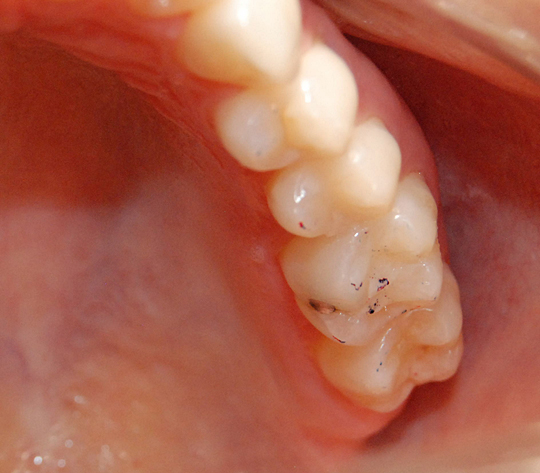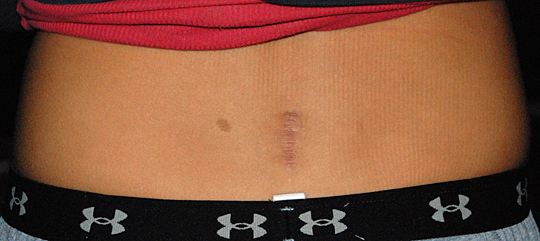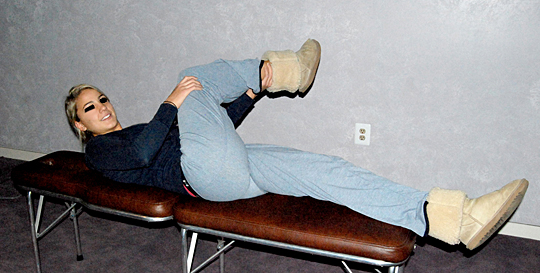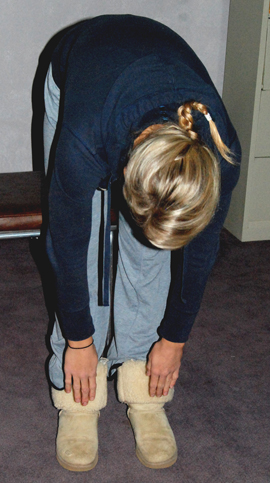Dental/Feet/Low-Back Connection
The case of a 20-year-old college basketball player.
Who ever would believe that having a misalignment of the teeth and foot pronation would result in back surgery. This is exactly what happened to a 20 year-old female basketball player from a local University in New Jersey.
SF had been playing basketball since she was 8 years-old and now plays Division I basketball for Rider University. Last October, SF was sidelined due to low back and nerve pain. She was diagnosed with two herniated discs. SF had surgery in May of 2008 to remove the two herniated discs. Her pain went away for a few months. In September of 2009 she returned to training exercises and lifting weights in an attempt to get ready for the 2009 basketball season and her pain returned. A couple weeks into pre-season training she started experiencing excruciating sciatic pain in her right low back and buttock areas. The coach sidelined her and she was lead to believe that she would no longer be able to play competitive sports.
SF refrained from any conditioning for five weeks hoping that the pain would some how resolve but to no avail. SF was referred to Dr.Smith, a natural medicine practitioner, by her father. The initial evaluation revealed distortions of her cranial bone alignment, a misalignment of the teeth and pronated feet. Doctor Smith recommended a special flexible foot support to help correct the bilateral foot pronation, a cranial adjustment and placement of a shim (bonded resin tooth support) on one tooth to correct the cranial- teeth misalignment. SF was also evaluated for nutritional support to assist the healing process.
Doctor Smith’s clinical research has shown that when either or both foundations of the human body (maxillae or upper jaw and feet) are out of balance the structures in between, spine, pelvis, sacrum, muscles, ligaments and soft tissue, all compensate. The resulting imbalance causes pain, disc compression and ultimate herniation.
SF returned to Dr. Smith’s office within 24 hours after the initial evaluation and the patient’s purchase and placement of the recommended foot insert. SF reported that her low back pain greatly diminished. Following the cranial bone realignment and placement of the tooth support, SF stated that she was completely free of pain and experienced more mobility than any time during the last five weeks. Two days prior to being treated by Dr. Smith SF experienced severe pain while stretching her hip flexors and pain when flexing to touch her toes. Immediately after treatment, SF was able to perform the same hip flexor muscle stretching exercise and also touch her toes totally without pain. SF was extremely excited about being able to play Division I basketball this season.
The key concept of this case is that preexisting poor body mechanics still exists even after major surgery. Not correcting the underlying problem will allow the same preexisting imbalances to return with the accompanying pain. Only by restoring structural integrity to the total body will it be able to heal and function pain free.

Figure 1. Shim #14 — A bonded resin shim the thickness of a sheet of typing paper was placed on the upper left first molar tooth. This seemingly small amount of tooth support was adequate to rebalance the entire cranio-sacral system (skull, spine, pelvis and sacrum). This can only be diagnosed and properly treated by a clinician who is skilled in the four diagnostic indicators first developed by Dr. Gerald H. Smith.

Figure 2. Pronation — The severe pronation of the left foot and moderate pronation of the right foot set the stage for the pelvis to drop and cause an anterior rotatation on the left pelvis and drop and rotate the right shoulder. In addition the right temporal bone will rotate into an external rotation. In between the teeth and feet the spine undergoes a rotational twist and compression. When one has a descending problem stemming from the teeth and an ascending problem from pronation, and exaggerated effect occurs, which predisposes the patient to a herniation.

Figure 3. Surgical scar — “Correcting” the defect in most cases does not resolve the true underlying problem. In my opinion, many post surgical failures result from not correcting the structural imbalances that exist.

Figure 4. Hip flexor exercise — Prior to correcting the cranial-dental-foot misalignment the patient could not perform this hip flexor stretching exercise without severe pain.

Figure 5. Flexon: touching the toes — Structural imbalances caused by pronated feet and a distorted cranium predisposes one to tightening the fascia or collagen sheet that surrounds all the muscles and tissue throughout the body. This restriction hampers blood and lymphatic flow and prevents flexibility. A balanced cranium and feet helps restore total body mobility.

STAY INFORMED
Big tech and mainstream media try to suppress the powerful information I have to share. Subscribe here to stay informed!
